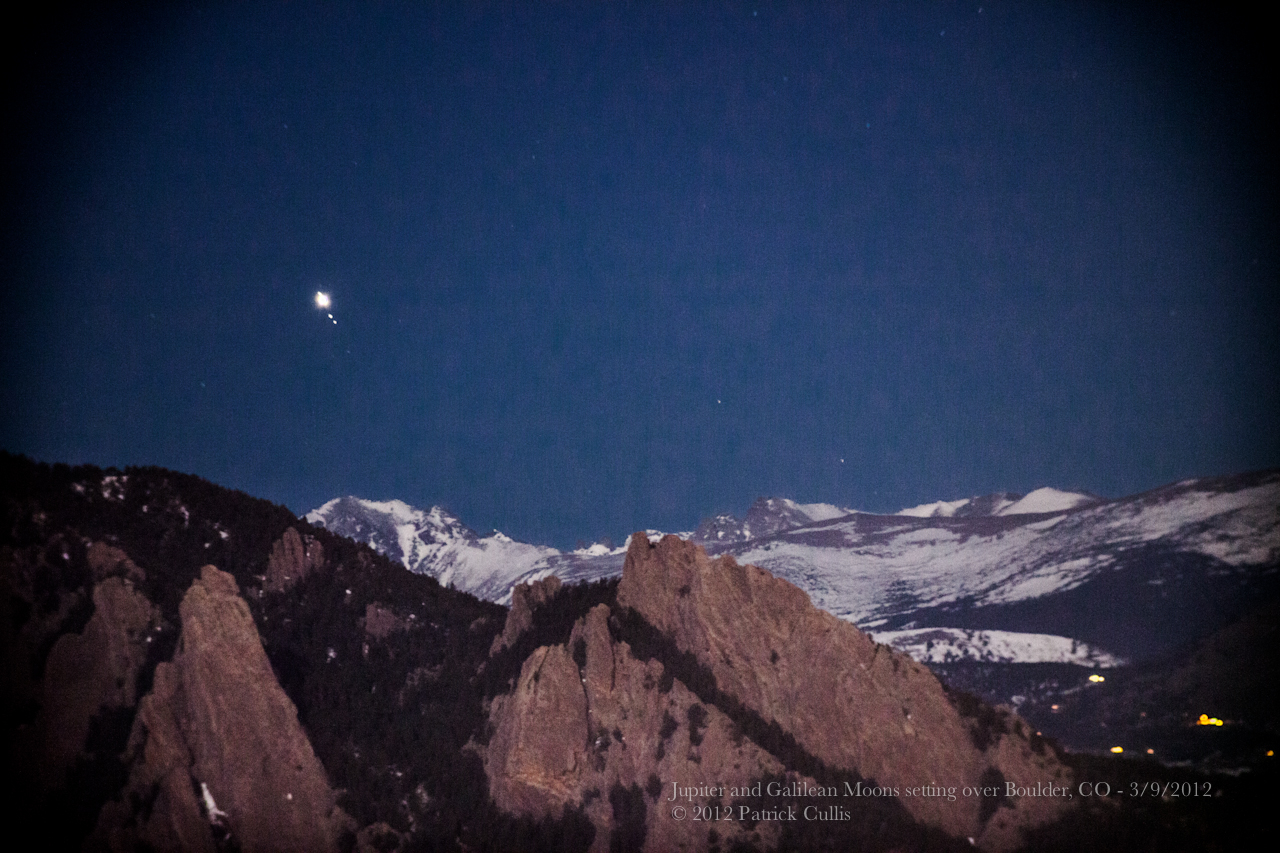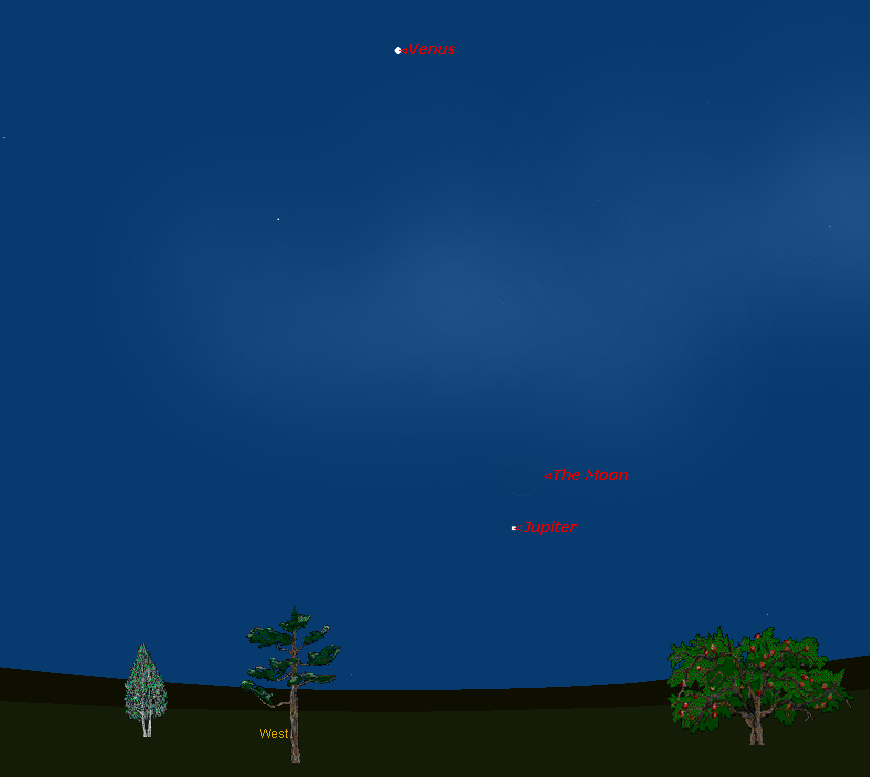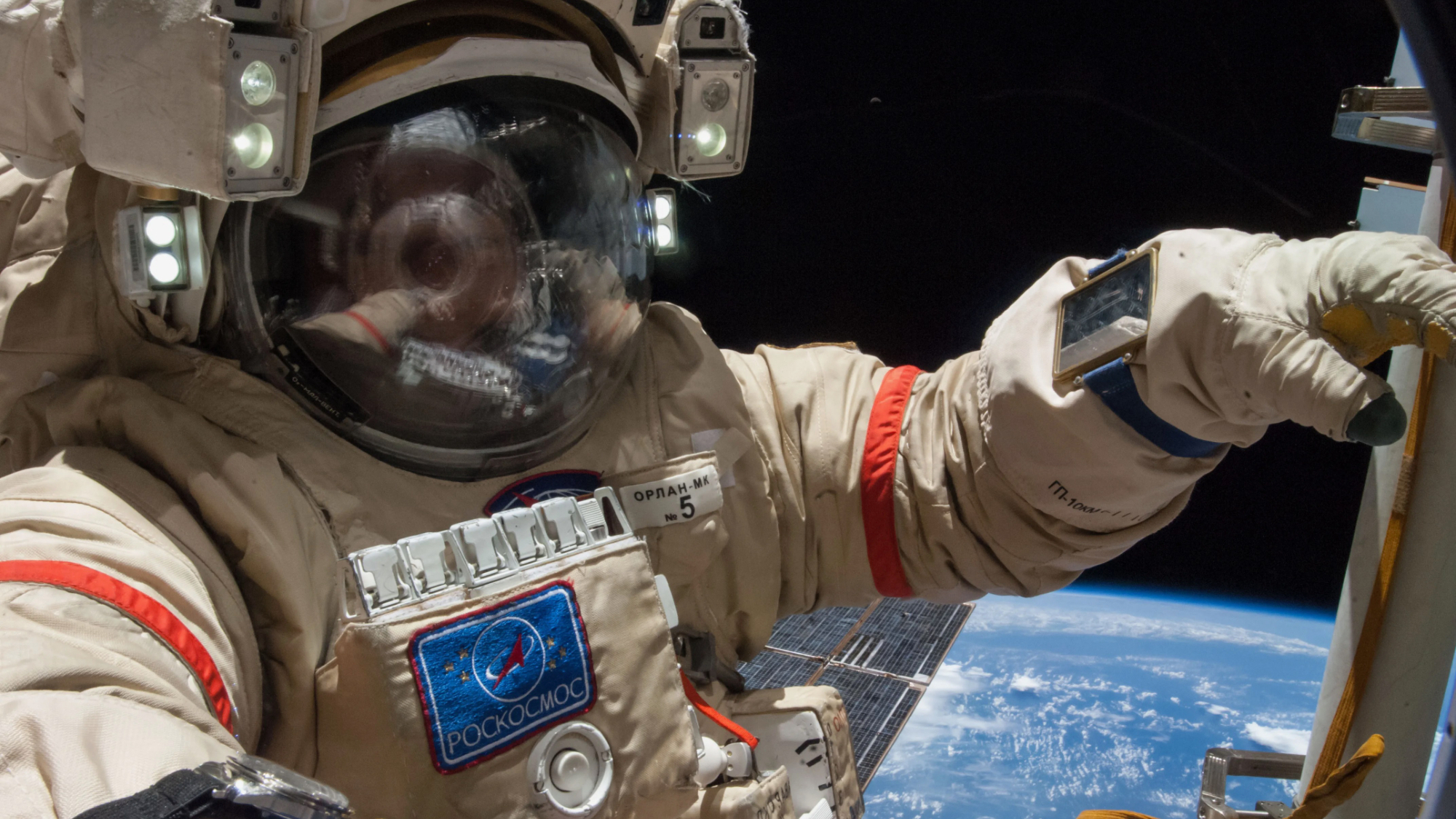Sunday Is Last Chance to See Jupiter — for Now

Jupiter will end its brilliant year-long show on Sunday evening (April 22) by making a rendezvous with an exceedingly thin and very young crescent moon.
Indeed, the moon itself will appear so thin and low that it may be rather hard to detect in the sun’s afterglow. Jupiter will be even lower, appearing to sit about 3 degrees directly below the slender lunar sliver. (Your closed fist held at arm's length measures roughly 10 degrees across.)
The moon will be just 36 hours past its new phase, and will thus be just 2 percent illuminated. The moon and Jupiter will be setting about 1 1/2 hours after sunset on Sunday. The Jupiter sky map associated with this guide shows where to look Sunday to see the planet after sunset.
To enhance your chances of getting a good look at both the moon and the planet, make sure that your prospective viewing site has a very clear and unobstructed view toward the west-northwest part of the sky.
Thirty minutes after sunset, the moon will be no higher than 10 degrees above the horizon. And Jupiter, which will be nothing more than a bright, white dot against the twilight background, will lurk nearby, appearing just 3 degrees lower.
You can accentuate your chances of picking up both heavenly bodies by scanning around that part of the sky with a decent pair of binoculars or a small telescope. Once you sight them, getting a glimpse of the pair with your unaided eyes should be a bit easier.
After Sunday, you can pretty much say goodbye to Jupiter as an evening object, as it will be swallowed up by the sunset glow. The planet will be in conjunction with the sun on May 13 and will not reappear again until sometime in early June, when it will transition to the early morning sky.
Breaking space news, the latest updates on rocket launches, skywatching events and more!
However, the giant planet is destined to put on a nice showing in the predawn sky during early summer, being nicely positioned near the bright orange star Aldebaran in the constellation Taurus (The Bull). And by then Venus will also have moved into the morning sky and will be nearby, making for an attractive celestial scene.
So for Jupiter, this is not goodbye but rather, "till we meet again this summer."
Joe Rao serves as an instructor and guest lecturer at New York's Hayden Planetarium. He writes about astronomy for The New York Times and other publications, and he is also an on-camera meteorologist for News 12 Westchester, New York.
Join our Space Forums to keep talking space on the latest missions, night sky and more! And if you have a news tip, correction or comment, let us know at: community@space.com.

Joe Rao is Space.com's skywatching columnist, as well as a veteran meteorologist and eclipse chaser who also serves as an instructor and guest lecturer at New York's Hayden Planetarium. He writes about astronomy for Natural History magazine, Sky & Telescope and other publications. Joe is an 8-time Emmy-nominated meteorologist who served the Putnam Valley region of New York for over 21 years. You can find him on Twitter and YouTube tracking lunar and solar eclipses, meteor showers and more. To find out Joe's latest project, visit him on Twitter.

